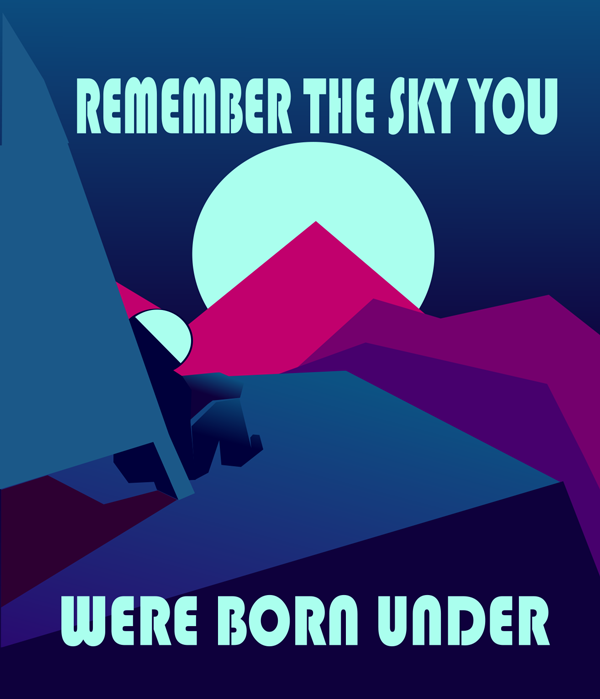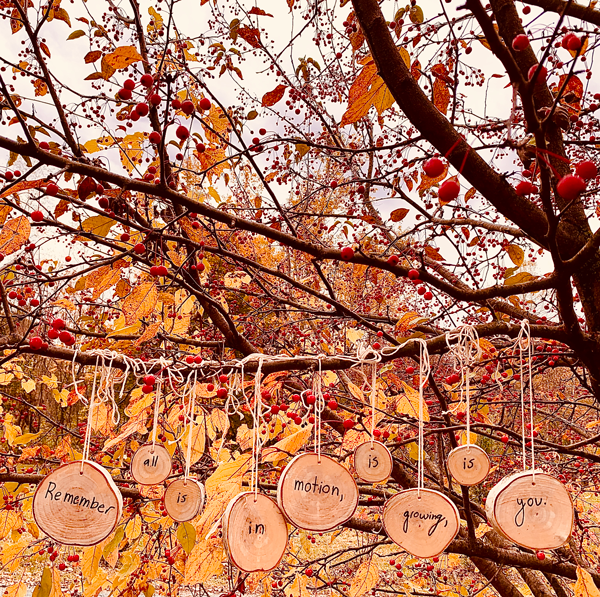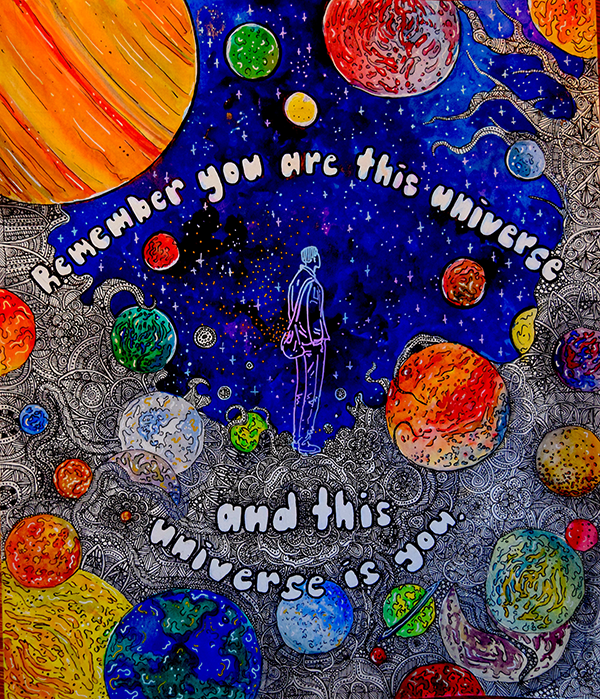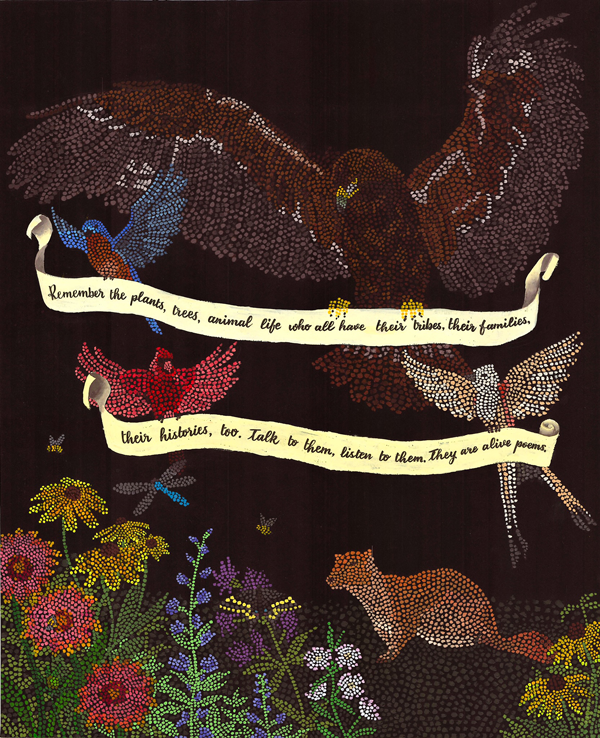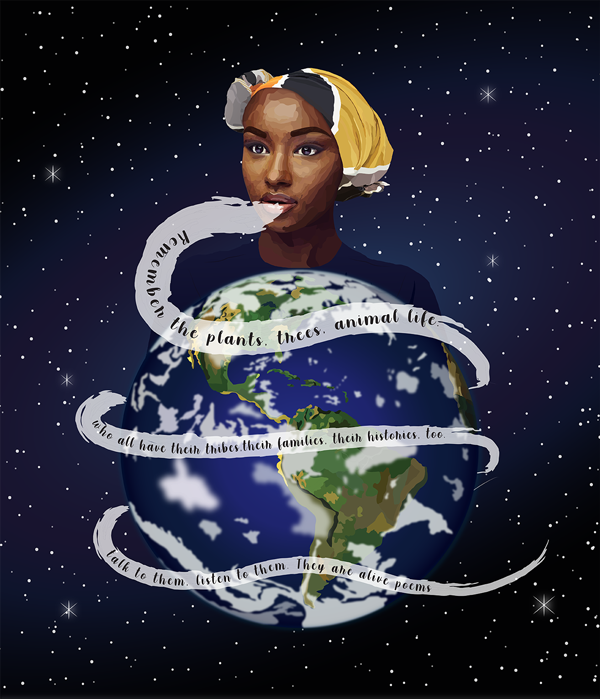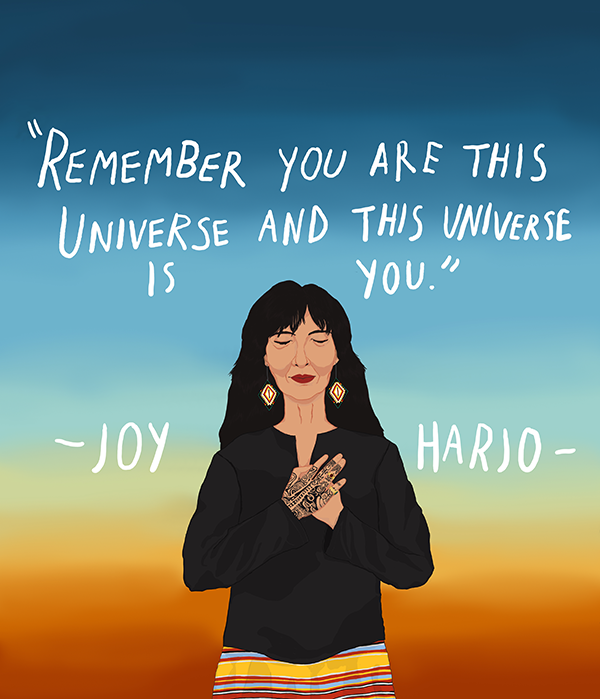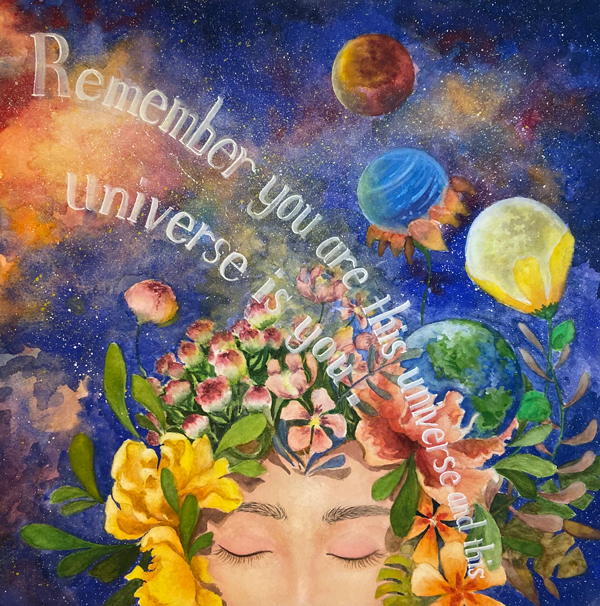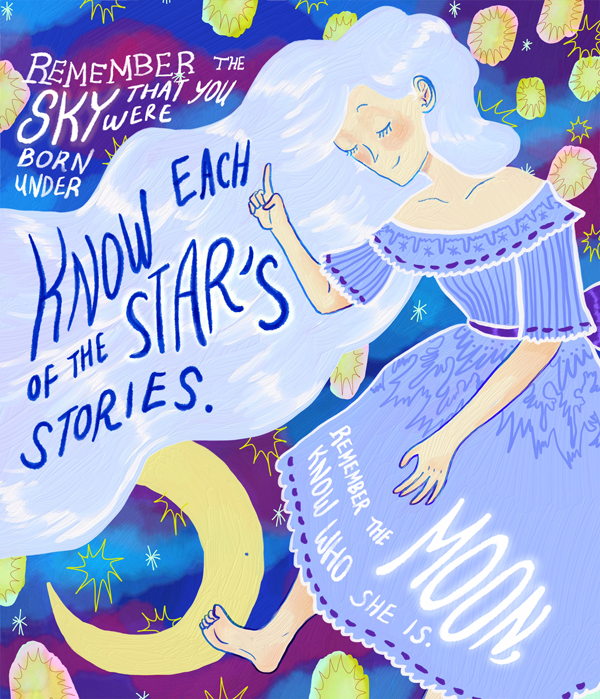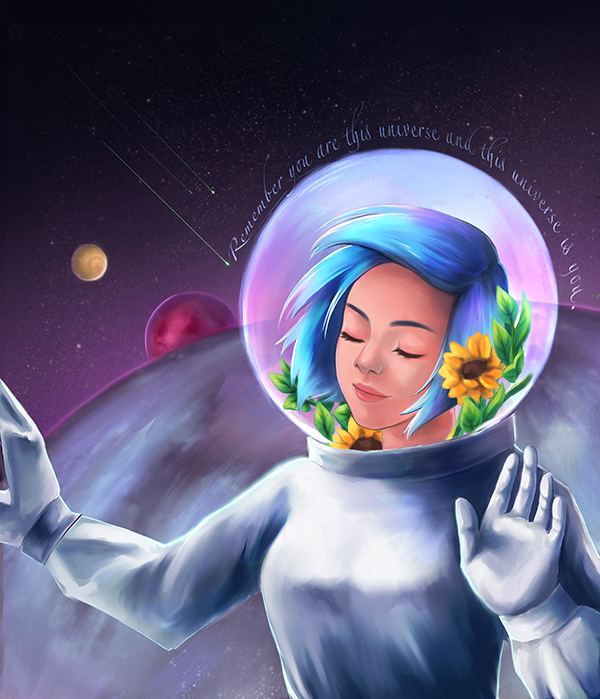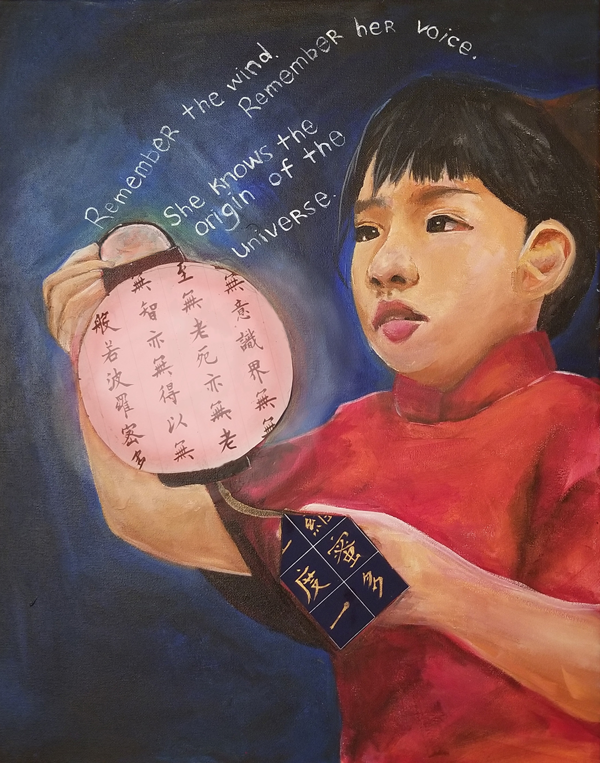In the fall of 2019, the Academy of American Poets, the originator and organizer of National Poetry Month, invited students in grades 9 through 12 to enter artwork to be considered for the official April 2020 National Poetry Month poster. The 2020 poster, which is sent to 100,000 libraries, schools, bookstores, and community centers nationwide and made available by download on Poets.org, will feature a high school student's winning artwork. (View the winning poster from last year's inaugural National Poetry Month Poster Contest here.)
The Academy of American Poets is excited to share the following ten finalists in the 2020 National Poetry Month Poster Contest. Thank you, again, to everyone who submitted! The finalists' artwork, which features excerpts from a poem by U. S. Poet Laureate Joy Harjo, is shown here alongside excerpts from statements the students have provided about their work.

